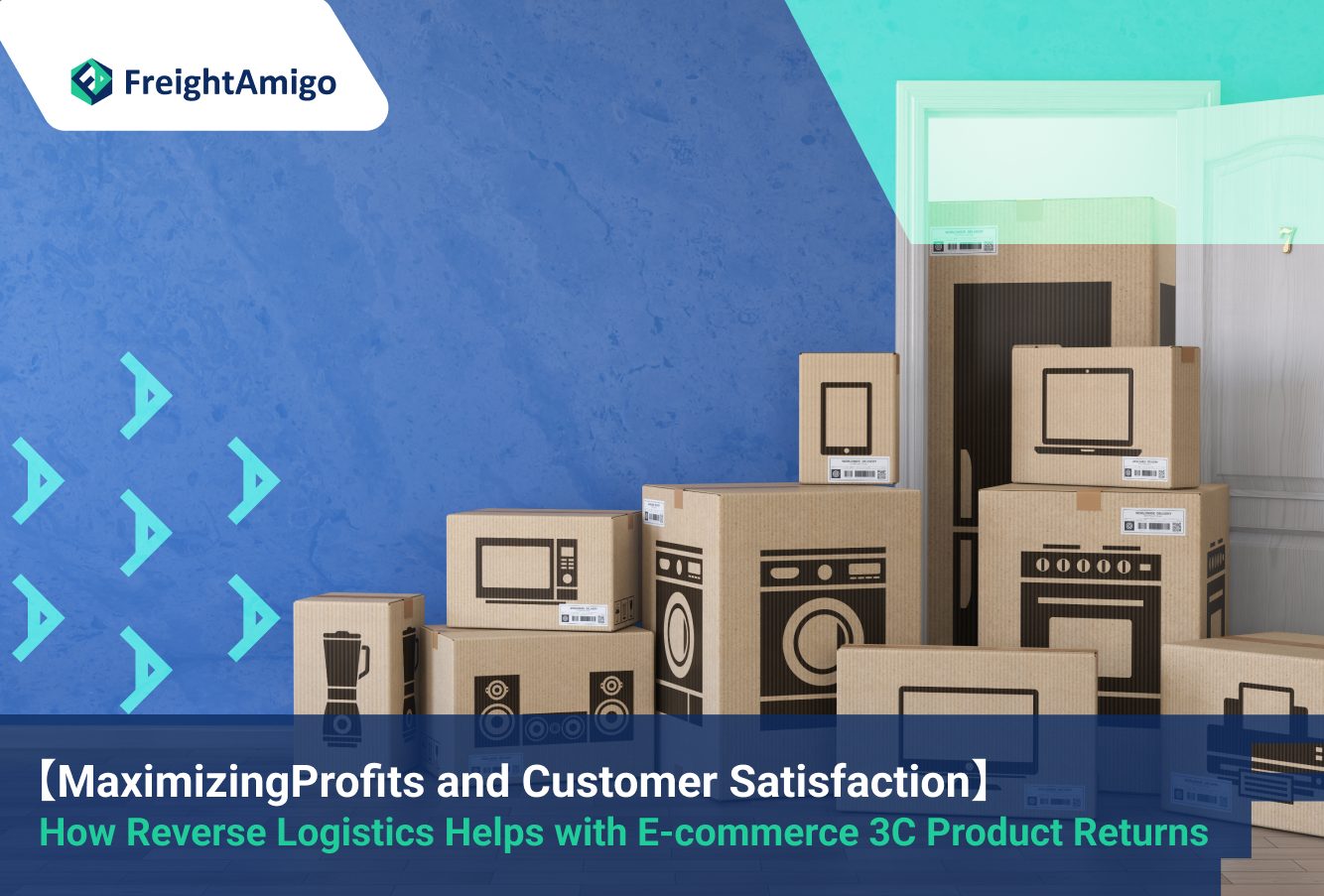Managing product returns is a crucial aspect of e-commerce that can significantly impact business success. Reverse logistics, the process of handling returned products, is a vital component of e-commerce operations. This article explores how reverse logistics is revolutionising the way e-commerce handles 3C product returns, with a particular focus on maximising profits and customer satisfaction.
Latest update on 15 February, 2024 by Aiden Ng– Marketing Analyst at FreightAmigo
Want to compare the best Express, Air Freight, Sea Freight, Rail Freight & Trucking rates so as to have better control on cost?
The importance of managing product returns in e-commerce
Product returns are an inevitable part of the e-commerce landscape. Customers may return products due to various reasons, such as receiving a defective item, changing their mind, or encountering sizing issues. Therefore, it is essential for e-commerce businesses to have a robust system in place to manage these returns efficiently. Failure to do so can result in dissatisfied customers, negative reviews, and lost revenue.
The impact of product returns on profits and customer satisfaction
Product returns can have a significant impact on both profits and customer satisfaction in e-commerce. When returns are not handled properly, businesses may incur additional costs associated with restocking, shipping, and refurbishing returned items. Moreover, customers who experience a hassle when returning products are less likely to make future purchases, leading to a decrease in customer loyalty and overall satisfaction.
Reverse logistics in the context of e-commerce 3C products
The term “3C products” refers to electronics such as computers, communication devices, and consumer electronics. These products have unique characteristics that make their reverse logistics particularly challenging. Unlike clothing or non-electronic items, 3C products often require specialized handling and testing to ensure they are in good condition for resale. Reverse logistics for 3C products involves not only managing the physical return of the items but also testing, refurbishing, and repackaging them for future sale.
Challenges and opportunities in managing product returns for e-commerce 3C products
Managing product returns for e-commerce 3C products comes with its own set of challenges and opportunities. One of the main challenges is the complexity of testing and refurbishing these items, as they often require specialized knowledge and equipment. Additionally, the high value of 3C products means that any losses incurred during the return process can have a significant financial impact on the business. However, these challenges also present opportunities for businesses to differentiate themselves by offering superior reverse logistics services for 3C products, thereby enhancing customer satisfaction and loyalty.
Strategies for optimizing reverse logistics in e-commerce 3C product returns
To optimize reverse logistics for e-commerce 3C product returns, businesses can implement several strategies. Firstly, investing in advanced diagnostic tools and testing equipment can streamline the process of identifying and repairing defects in returned items. This not only reduces the time it takes to refurbish products but also improves the accuracy of the testing process. Secondly, implementing a well-designed tracking system allows businesses to monitor the progress of returned items throughout the reverse logistics process, providing transparency to both the customer and the business. Lastly, offering flexible return policies and hassle-free return procedures can significantly enhance customer satisfaction, leading to increased customer loyalty and repeat purchases.
How do 3PL providers improve reverse logistics in e-commerce 3C product returns
Third-party logistics providers (3PLs) play a crucial role in optimizing reverse logistics for e-commerce 3C product returns. These providers specialize in managing the logistics and transportation processes, allowing businesses to focus on their core competencies. By partnering with a reliable 3PL, e-commerce businesses can benefit from their expertise in reverse logistics, including efficient handling, testing, refurbishing, and repackaging of 3C products. Furthermore, 3PLs often have established networks and partnerships that can help reduce costs and improve the overall efficiency of the reverse logistics process.
The future of reverse logistics in e-commerce 3C product returns
As e-commerce grows, reverse logistics will become more critical in managing product returns, especially for 3C products. Efficient reverse logistics is essential for maximizing profits and customer satisfaction. Businesses can optimize the process by recognizing its importance and implementing strategies. Third-party logistics providers can also enhance the management of reverse logistics for e-commerce 3C product returns. As technology advances and customer expectations evolve, businesses have the potential to differentiate themselves and thrive in the competitive e-commerce landscape through effective reverse logistics. At FreightAmigo, we recognize its importance through technologies and expertise gleaned from years delivering goods globally. Our customizable solutions maximize recovery value while exceeding service-level expectations.
There are different options for cargo transportation. If you want to choose the most suitable solution, it is best to have the full support of logistics experts! Contact FreightAmigo to discuss how partnering with a dedicated 3PL can enhance your returns management.
Read More:
【Reverse Logistics】Streamlining Returns and Optimizing Inventory Recovery
【Revolutionizing the Customer Experience】 The Impact of E-commerce on Toy Shipping
【Digital Purchase Order Management】 Improving Collaboration between Shippers and Logistics Providers
【Supply Chain Management】 Unleashing the Power of Supply Chain Data through Advanced Analytics
If you have any inquiries on logistics/supply chain, feel free to contact FreightAmigo now:
Chat with us online | Hotline: +852 28121686 | WhatsApp: +852 27467829









































